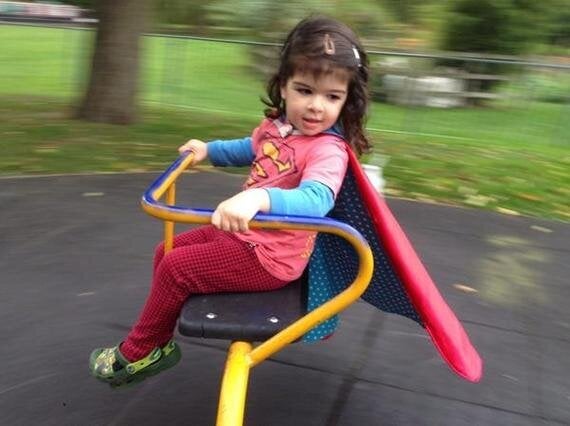Some friends recently had an upsetting family trip to the Natural History Museum.
They have a bright, bold, and delightful daughter called Zoe - she amused me no end when inventively used our toys to enthusiastically stage a river raid on Noah's Ark by Spider-Man & Hulk to rescue the animals from the clutches of supervillains Annihilus & Joker. Sitting cosily inside the marketing category of 'Girl' is seemingly not for her.
So at the museum shop, it was a shock to her parents when then four year old Zoe, after carefully inspecting the general science toys on display, sighed and lamented how they were only for boys.
Zoe's mother was so upset about this that she wanted to cry. This is definitely not the way they wanted to bring their daughter up, and in fact they thought they were doing well by giving her trucks and other non-traditional girls toys. Their only conclusion was that this message must have come from outside the home.
It indicates the scale of the problem with gendered marketing. As parents, we do what we can to instil our children with positive & empowering messages and influences, to encourage them to discover what will engage & inspire them. But gendered marketing is so threaded into our everyday life - shops, TV, movies, magazines, and peers - that its effects will probably permeate through whatever defences we put up.
People like myself and others can rail against this. We may even convince the occasional retailer or manufacturer to change they way they define their products. One thing some companies are doing is introducing 'girl' versions of toys. You know the sort of thing, tool boxes, toy crossbows, and even science kits, that instead of being 'normal' colours, are pink. Some people (usually toy industry people) hail these as an ingenious development. But to me it simply reinforces the 'pink is for girls' mentality. They may play with the 'perfume factory science kit', but what happens when girls see an item that isn't pink? They may assume it's for boys and ignore it. What do boys take away from this? That only pink things are for girls, but this also excludes them from the likes of baby dolls and kitchen sets.
While we have this mentality, there will be countless stories where a girl decides a career isn't for her because it's not presented as such, or a boy may think being home with children is for mothers only. Children may privately carry on in this way of thinking their entire lives, perhaps even perpetuating it when they become adults. Who knows, maybe they'll move into toy & children's clothes marketing.
I actively encourage my daughter to play with toys that are not in the 'pink aisle', and to also wear clothes from the boy's section too. But it's easy for me to be an idealist. My daughter is not even three. As she gets older, and seeks out her own media, the marketeers will be able to reach her directly. The peer group pressure upon her to conform to the identity portrayed in these messages will also grow.
The retailers and manufacturers in question claim they are only feeding demand, but if as a consequence our children can grow up with the belief that science - and any tech or engineering role - is only for boys, something is very wrong. At least Zoe's parents became aware of the the issue, and have managed to turn it around with her, by getting her a dress-up labcoat, science kits, and they even had a female chemical engineer telling Zoe how cool her job is! Many children will not be this lucky.
I hope the colour palette of childhood in retail evolves. That pink and pastels stop being the exclusive domain of our girls. That the whole spectrum is opened up for all. That brands I love such as Lego, Star Wars, and Marvel & DC stop positioning themselves as a girl free zone, and domestic & nursery toys are made to appeal to boys too. Luckily, there are entrepreneurial companies spotting the gap in the market for something beyond pink and blue.
This week saw #WearYourSuperheroes Day, created by a girl in the US in support of her sister who was teased for her love of superheroes. Whenever my daughter runs around the playground in her beloved superhero cape, I know (because they tell us) many boys and girls notice and have their already formed assumptions challenged.
I dearly hope my daughter's love of all kinds of colours, toys, and interests continues, that she doesn't get directed down the pink aisle - and that we inspire others to join her too.

An earlier version of this post appeared here.